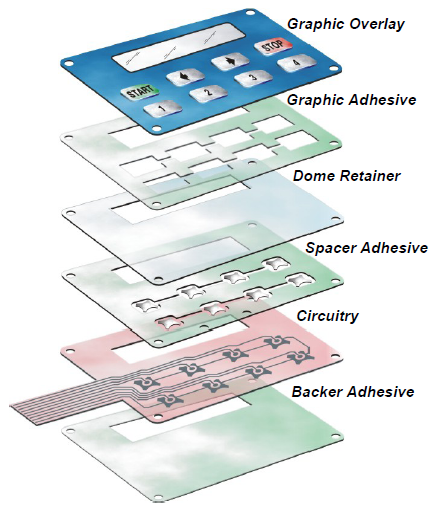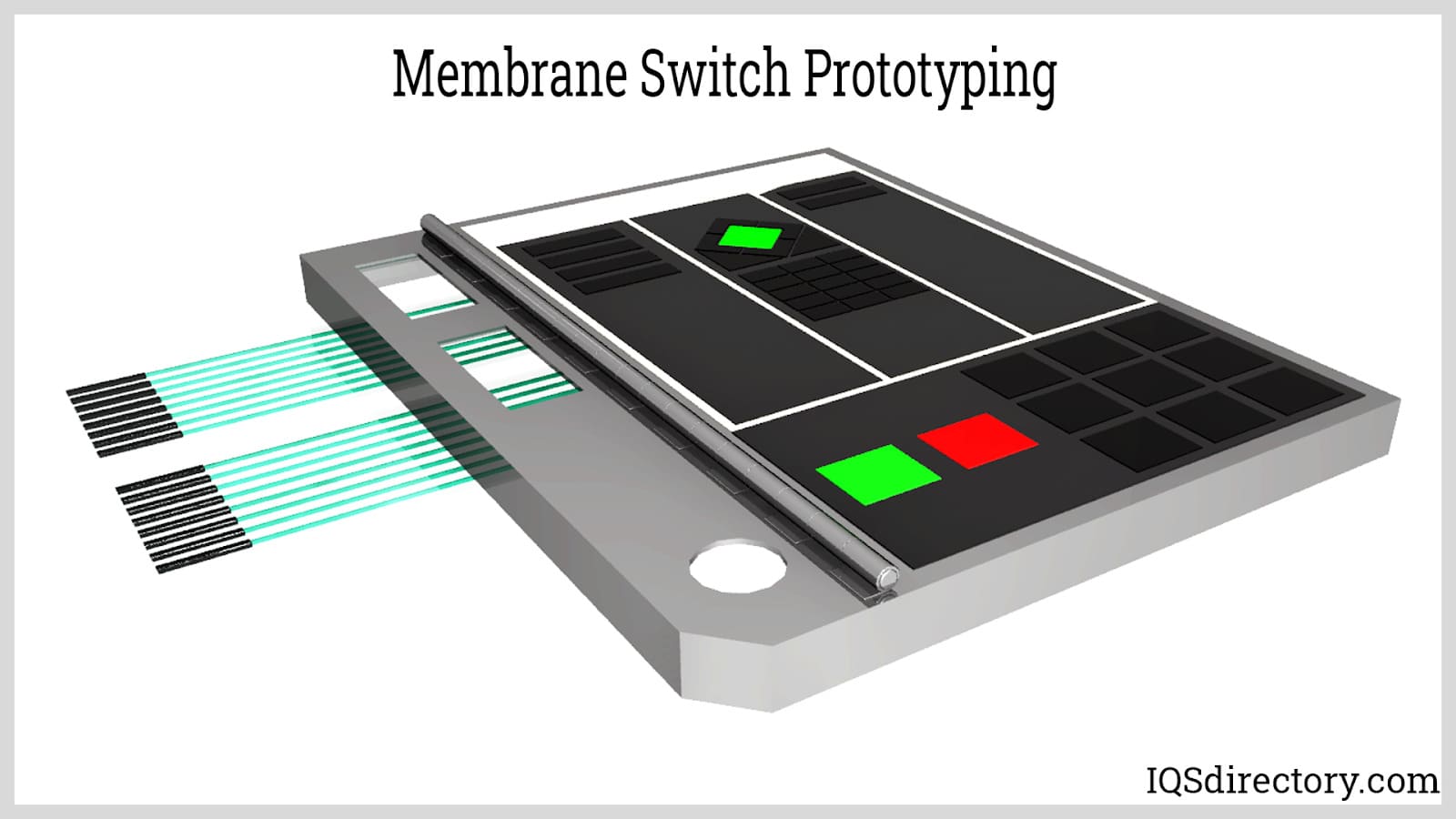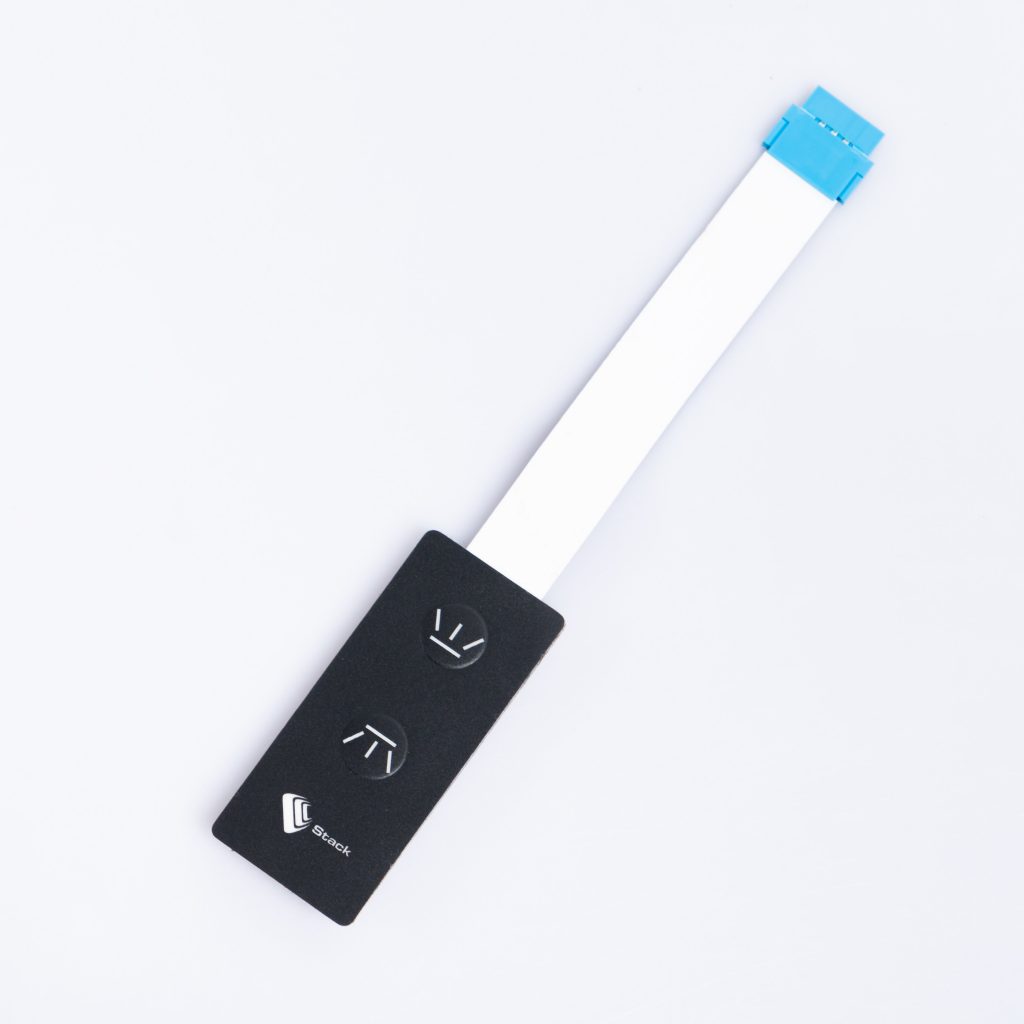The Production Process Behind Membrane Layer Change: What You Need to Know
The manufacturing procedure behind membrane switches over combines careful layout, material option, and quality control. It begins with recognizing the complexities of membrane layer switch layout and progresses via different stages, consisting of material options and printing techniques. Each phase plays an essential function in ensuring performance and toughness. Nevertheless, the intricacies of layer construction and the extensive screening standards may disclose understandings that are not instantly evident. What lies past these fundamental components?
Understanding Membrane Switch Over Style
Membrane layer buttons might appear easy at first glimpse, their layout involves elaborate factors to consider that assure functionality and sturdiness. The design process begins with a comprehensive understanding of individual needs, consisting of the user interface's desired application and environmental aspects. Functional designs is a crucial aspect, as the design needs to assist in simplicity of usage while making sure that responsive comments satisfies user expectations.Moreover, the layering of components, such as graphic overlays, glue layers, and conductive traces, should be exactly engineered. membrane switch. This layered arrangement not just affects the switch's responsiveness but additionally impacts its longevity. Attention is offered to the securing methods employed to protect versus wetness and dust, which could compromise efficiency. In addition, layout considerations reach aesthetics, where color pattern and aesthetic clarity boost individual experience. Ultimately, the design of membrane layer switches over equilibriums functionality, customer experience, and longevity, making sure that they meet the needs of different applications effectively
Products Used in Membrane Layer Change Production
When choosing products for membrane switch manufacturing, it is necessary to contemplate both efficiency and resilience. The key materials include polyester and polycarbonate films, which supply flexibility and toughness. These films are usually coated with glue to guarantee proper bonding to substrates. Conductive inks, commonly composed of silver or carbon, are important for creating electric links within the switch, enabling trustworthy operation.Additionally, a protective layer, such as a difficult layer, is frequently related to boost scratch resistance and longevity. The selection of backing material, such as acrylic or foam, can substantially impact the switch's responsive feeling and overall individual experience. In addition, various environmental elements, including temperature and humidity, must guide material selection to ensure peak efficiency in details applications. Inevitably, the right combination of products adds to the membrane layer button's functionality and lifespan, making informed choices vital for makers.
The Printing Process: Creating Graphics and Text
The printing procedure in membrane switch manufacturing plays a significant role in producing top notch graphics and message. Different visuals layout strategies are used to ensure aesthetic appeal and capability, while mindful ink option approaches are crucial for durability and efficiency. Recognizing these aspects is essential for achieving best lead to membrane layer button style.
Graphic Style Techniques
Graphic design strategies play a crucial function in the printing process of membrane layer switches, as they define just how graphics and text will eventually show up on the last product. Reliable graphic layout includes the strategic usage of layouts, colors, and fonts to boost readability and visual allure. Developers typically utilize vector graphics for scalability, making sure that images stay sharp at various sizes. In addition, interest to comparison and positioning is vital, as it influences customer interaction and visual top quality. The consolidation of branding components, such as logos, need to be handled with like keep brand stability. On the whole, thoughtful graphic style strategies add significantly to the functionality and beauty of membrane layer buttons, impacting individual experience and item efficiency.
Ink Option Methods
Picking the suitable ink is necessary for attaining the desired visual high quality and toughness in membrane layer switch production. Numerous ink kinds are made use of, including solvent-based, water-based, and UV-curable inks. Each type provides unique attributes, such as bond, resistance, and adaptability to environmental factors. Solvent-based inks are commonly preferred for their durability and vibrant shades, while water-based inks are more environmentally friendly but may have limitations in attachment. UV-curable inks give fast healing and durable efficiency. Furthermore, color matching techniques guarantee that the selected inks straighten with layout specs. Ultimately, the option of ink need to think about aspects such as application approach, substratum compatibility, and end-use needs to attain premium cause membrane layer switch graphics and message.
Layer Building and Setting Up

Material Selection Process
A mindful choice of products is vital in the production procedure of membrane switches, as it directly influences functionality and sturdiness. The main products utilized consist of polyester, polycarbonate, and various conductive inks. Polyester is commonly preferred for its excellent resistance to chemicals and abrasion, making it ideal for rough settings. Polycarbonate, on the various other hand, supplies exceptional clarity and influence resistance, which is beneficial for applications needing visibility and toughness. Conductive inks, commonly made up of silver or carbon, are essential for creating dependable electric paths. In addition, the selection of sticky products influences the total honesty of the switch - membrane switch. Examining factors such as ecological direct exposure, responsive responses, and aesthetic requirements overviews producers in choosing the very best materials for their details applications
Layer Bond Techniques
Adhering layers in membrane button building is a vital procedure that guarantees performance and long life. Numerous adhesion methods are utilized to safeguard perfect bonding in between layers, which normally include the use of adhesives, heat, and pressure. Pressure-sensitive adhesives (PSAs) are commonly made use of for their ease of application and prompt bonding capacities. Furthermore, thermal bonding techniques can be used, where warm is made use of to activate sticky residential or commercial properties, securing a strong bond. The selection of adhesion technique largely depends upon the materials included and the particular application demands of the membrane layer button. Appropriate placement and uniform application of adhesives are crucial to stop issues, securing the button operates efficiently throughout its intended life-span.
Quality Assurance Procedures
Assuring top quality control during the layer building and assembly of membrane layer switches is necessary for keeping performance and dependability. This process commonly involves numerous essential procedures, including detailed assessments at each phase of production. Suppliers make use of sophisticated screening techniques, such as peel examinations and attachment assessments, to confirm the stability of layer bonds. Furthermore, visual inspections are conducted to recognize any defects in printing or product disparities. Ecological conditions, such as temperature level and humidity, are thoroughly monitored to ensure ideal healing and attachment. Furthermore, normal calibration of devices assists preserve specific manufacturing requirements. By executing these quality assurance actions, suppliers can substantially minimize the risk of item failing, ensuring that the final membrane layer changes satisfy the required specifications and customer assumptions.
Evaluating and High Quality Control Procedures

Developments in Membrane Switch Over Innovation
As innovations in innovation continue to advance, membrane layer switches are gaining from ingenious advancements that boost their functionality and customer experience. One significant development is the integration of capacitive touch innovation, which enables even more user-friendly and receptive user interfaces. This change not only boosts appearances however additionally decreases more tips here mechanical damage, prolonging the life-span of the switches.Additionally, developments in visuals overlay materials have actually resulted in boosted sturdiness and resistance to ecological elements such as wetness and UV light. These materials now supply enhanced clearness and illumination, further raising the aesthetic appeal.Furthermore, the incorporation of wise technology is transforming membrane switches over into interactive control panels, allowing connection with IoT devices. This connectivity promotes a smooth user experience, paving the method for applications in numerous industries, from healthcare to consumer electronic devices. Jointly, these innovations position membrane changes as essential components in contemporary gadget layout.
Regularly Asked Questions
The length of time Does the Membrane Switch Manufacturing Process Take?
The duration of the membrane switch manufacturing process can vary significantly. Elements such as complexity, materials utilized, and manufacturing volume influence timelines, with regular production varying from a few days to a number of weeks for completion.
What Are the Typical Applications for Membrane Switches?
Membrane layer buttons are commonly utilized in various sectors, consisting of auto controls, house devices, clinical tools, and customer electronic devices (membrane switch). Their convenience and durability make them excellent for applications requiring straightforward user interfaces and trusted efficiency in diverse environments
Can Membrane Switches Over Be Custom-made for Certain Requirements?

What Is the Lifespan of a Common Membrane Change?
The life-span of a common membrane layer button differs, yet usually, it varies from 1 to 5 million cycles. Factors such as usage, environment, and material quality considerably affect toughness and total efficiency in time.

Are Membrane Switches Environmentally Pleasant?
The ecological kindness of membrane switches differs. Some products utilized may not be recyclable, while others can be environmentally friendly. The overall influence depends on manufacturing practices and products, necessitating mindful consideration during option and disposal. The production procedure behind membrane switches combines mindful style, material option, and high quality control. It begins with recognizing the ins and outs of membrane button style and progresses via different stages, consisting of material selections and printing methods. When try this site selecting products for membrane button manufacturing, it is essential to ponder both performance and toughness. A cautious option of materials is essential in the production process of membrane layer switches, as it directly affects performance and durability. The option of adhesion technique largely depends on the materials entailed and the particular application needs of the membrane switch.